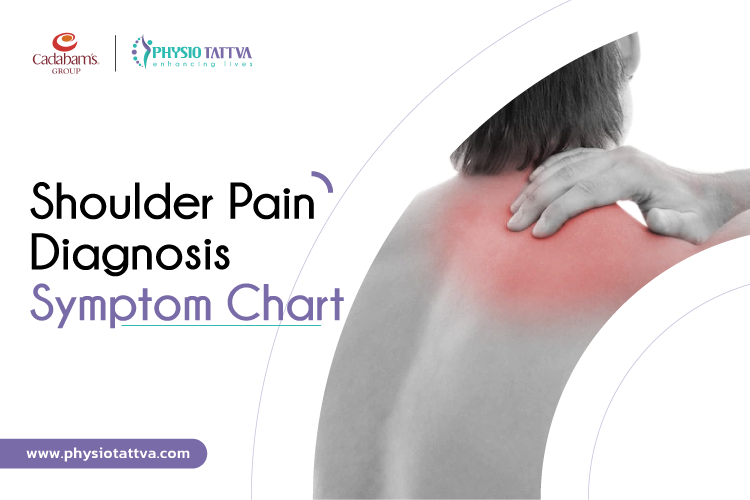Car Accident Chest Injuries
Car accidents are a leading cause of chest injuries. With an impact so great, it’s no wonder that the delicate structures of the chest can be damaged. According to the National Highway Traffic Safety Administration (NHTSA), over 1.7 million people were injured in car accidents in the United States in 2020. Of those injuries, over 200,000 were chest injuries. Chest injuries can range from minor bruises to life-threatening conditions. They can affect the lungs, heart, ribs, and other organs in the chest. Without prompt medical attention, chest injuries can lead to serious complications, including death.
Why Chest Injuries Are Dangerous?
The chest is a complex and vital part of the body. It contains the heart, lungs, and other organs that are essential for life. The ribs protect these organs from damage, but they can also be broken in a car accident. Broken ribs can cause pain, difficulty breathing, and even internal bleeding. In some cases, broken ribs can puncture the lungs and cause a collapsed lung. This is a serious condition that can be life-threatening if not treated promptly. Other chest injuries that can occur in a car accident include:
Recognizing Chest Injury Symptoms?
Chest injuries can cause a wide range of symptoms, depending on the severity of the injury. Some of the most common symptoms include:
What Should You Do If You Suspect a Chest Injury?
If you suspect that you or someone else has a chest injury, it is important to seek medical attention immediately. Chest injuries can be serious, and even minor injuries can worsen if not treated promptly. While waiting for medical help to arrive, there are a few things you can do to help:
Car Accident Chest Injury: A Comprehensive Guide
If you’ve recently been involved in a car accident and are experiencing chest pain, it’s essential to seek immediate medical attention. Chest injuries can vary in severity, ranging from minor bruises to life-threatening conditions. Understanding the different types of chest injuries and their potential consequences is crucial for informed decision-making and prompt treatment.
Types of Chest Injuries
Chest injuries can be broadly classified into two categories based on their severity:
Minor Chest Injuries
Minor chest injuries typically involve soft tissue damage, such as bruises, muscle strains, or rib fractures. These injuries usually cause localized pain and tenderness and don’t require extensive medical intervention. However, it’s still recommended to seek medical attention to rule out any underlying complications.
Major Chest Injuries
Major chest injuries include conditions that affect the chest wall, lungs, or heart. These injuries can be life-threatening and require immediate medical attention. Some of the most common types of major chest injuries include:
- Collapsed lungs: A collapsed lung occurs when air leaks into the space between the chest wall and the lung, causing it to collapse. This can lead to shortness of breath, chest pain, and even respiratory failure.
- Cardiac arrest: Cardiac arrest is a condition in which the heart suddenly stops beating. It is a medical emergency and requires immediate CPR and defibrillation.
- Flail chest: A flail chest occurs when multiple ribs fracture and break away from the sternum, creating an unstable chest wall. This can cause severe pain and can lead to respiratory problems.
- Tension pneumothorax: Tension pneumothorax occurs when air builds up in the space between the chest wall and the lung, causing pressure on the lung and heart. It is a life-threatening condition and requires immediate medical attention.
- Hemothorax: Hemothorax occurs when blood collects in the space between the chest wall and the lung. It can lead to shortness of breath, chest pain, and anemia.
Early diagnosis and treatment of chest injuries are crucial for maximizing recovery and preventing complications. If you have been involved in a car accident and are experiencing any chest pain or discomfort, seek medical attention immediately.
Car Accident Chest Injury
Car accidents are a leading cause of trauma-related injuries, including chest injuries. Car accident chest injuries can range from minor bruises to more serious injuries, such as broken ribs, collapsed lungs, and heart damage. It’s crucial to seek medical attention immediately following a car accident, even if you do not feel any pain or discomfort. Chest injuries can be life-threatening and require prompt medical intervention. This article explores the symptoms, diagnosis, treatment, and prevention of chest injuries sustained in car accidents.
Symptoms of Chest Injury
The symptoms of a chest injury can vary depending on the severity of the injury. Some common symptoms of a chest injury include:
- Pain in the chest
- Difficulty breathing
- Shortness of breath
- Coughing up blood
- Bruising or swelling on the chest
- Rapid or irregular heartbeat
- Chest pain that worsens when coughing or taking a deep breath
- Pain that radiates to the back, neck, or shoulders
If you experience any of these symptoms after a car accident, it is important to seek medical attention immediately.
Diagnosis of Chest Injury
The diagnosis of a chest injury typically involves a physical examination, medical history, and imaging studies. During the physical examination, the doctor will check for signs of injury, including pain, tenderness, and swelling. The doctor will also listen to your lungs and heart to check for any abnormalities. Medical history can help the doctor determine if you have any pre-existing conditions that may affect the diagnosis or treatment of your chest injury. Imaging studies, such as X-rays, CT scans, and MRIs, can be used to visualize the chest and identify any injuries.
Treatment of Chest Injury
The treatment of a chest injury depends on the severity of the injury. Minor chest injuries, such as bruises, may not require any medical treatment. More serious injuries, such as broken ribs or a collapsed lung, may require hospitalization and surgery. Treatment for chest injuries may include:
- Pain medication
- Anti-inflammatory medication
- Chest tube insertion
- Surgery
- Rehabilitation
The goal of treatment is to relieve pain, prevent complications, and restore function to the chest.
Prevention of Chest Injury
There are several things you can do to help prevent chest injuries in a car accident. These include:
- Wear a seat belt every time you drive or ride in a vehicle
- Adjust your seat so that the steering wheel is close enough to your body that you can reach it comfortably without slouching
- Tilt your headrest so that it supports the back of your head
- Avoid driving under the influence of alcohol or drugs
- Be aware of your surroundings and drive defensively
By following these tips, you can help reduce your risk of sustaining a chest injury in a car accident.
Car Accident Chest Injury: Signs, Symptoms, and Treatment
When you’re involved in a car accident, the impact can send shockwaves through your body, potentially causing serious injuries. One of the most common injuries sustained in a car accident is chest trauma. Chest injuries can range from minor bruises to life-threatening conditions, so it’s crucial to seek medical attention promptly if you suspect you’ve suffered one.
Signs and Symptoms of Chest Injury
The signs and symptoms of chest injury can vary depending on the severity of the injury. Common symptoms include:
- Chest pain or tenderness
- Difficulty breathing or shortness of breath
- Coughing up blood
- Bruising or swelling of the chest
- Pain when you take a deep breath
Diagnosis of Chest Injury
Diagnosis of chest injury is typically made based on a physical examination and medical imaging tests such as X-rays or CT scans. During the physical examination, the doctor will check for signs of injury, such as swelling, bruising, or tenderness. They may also listen to your chest with a stethoscope to check for any abnormal sounds.
Treatment for Chest Injury
The treatment for chest injury depends on the severity of the injury. Minor injuries may be treated with rest, ice, and pain medication. More serious injuries may require surgery or other medical interventions.
Types of Chest Injuries
There are several types of chest injuries that can occur in a car accident, including:
- Bruised ribs: This is the most common type of chest injury. It occurs when the ribs are hit by a blunt object, such as the steering wheel or dashboard.
- Fractured ribs: This occurs when one or more ribs are broken. Fractured ribs can be painful and can make it difficult to breathe.
- Pneumothorax: This occurs when air enters the space between the lungs and the chest wall. Pneumothorax can cause the lung to collapse and can be life-threatening if not treated promptly.
- Hemothorax: This occurs when blood enters the space between the lungs and the chest wall. Hemothorax can also cause the lung to collapse and can be life-threatening if not treated promptly.
- Flail chest: This occurs when multiple ribs are fractured in two or more places. Flail chest can be life-threatening because it can cause the lungs to collapse and can make it difficult to breathe.
Complications of Chest Injury
Chest injuries can lead to a number of complications, including:
- Pneumonia: This is an infection of the lungs. Pneumonia can be a serious complication of chest injury, especially in people who have weakened immune systems.
- Atelectasis: This occurs when a portion of the lung collapses. Atelectasis can be caused by chest injury, especially if the injury causes the lung to bruise or bleed.
- Empyema: This is a collection of pus in the space between the lungs and the chest wall. Empyema can be a serious complication of chest injury, especially if it becomes infected.
Car Accident Chest Injury: A Guide to Prevention, Symptoms, and Treatment
Car accidents are a leading cause of chest injuries, which can range from minor bruises to life-threatening conditions. The impact of a collision can cause the chest to be crushed, pierced, or otherwise injured. Chest injuries can be particularly dangerous because they can damage the heart, lungs, and other vital organs.
Types of Chest Injuries
There are several types of chest injuries that can occur in a car accident, including:
- Blunt Force Trauma: This is the most common type of chest injury, caused by a direct impact to the chest. It can cause bruises, cuts, and broken ribs.
- Penetrating Trauma: This occurs when an object pierces the chest, such as a broken windshield or a piece of metal. It can cause serious damage to the heart, lungs, and other organs.
- Contusions: These are bruises on the chest that can occur from a direct impact. They are usually minor but can be painful.
- Rib Fractures: Broken ribs are a common type of chest injury that can occur from a direct impact or from the force of the impact being transmitted through the body. They can be painful and can make breathing difficult.
- Pneumothorax: This is a collapsed lung that can occur from a chest injury. It can cause shortness of breath and chest pain.
- Hemothorax: This is a collection of blood in the chest cavity that can occur from a chest injury. It can cause shortness of breath, chest pain, and shock.
Prevention of Chest Injury
There are several things you can do to help prevent chest injuries in a car accident, including:
- Wear a seatbelt: This is the single most important thing you can do to protect yourself from a chest injury in a car accident. Seatbelts help to keep you from being thrown around the vehicle in a collision, which can help to prevent chest injuries.
- Drive defensively: By driving defensively, you can help to avoid accidents that could lead to chest injuries. This includes staying alert, obeying the speed limit, and avoiding distractions.
- Maintain a safe following distance: Following too closely behind another vehicle can increase your risk of a rear-end collision, which can lead to chest injuries.
Symptoms of Chest Injury
If you have been in a car accident, it is important to be aware of the symptoms of a chest injury. These can include:
- Chest pain
- Shortness of breath
- Coughing up blood
- Bruising or swelling on the chest
- Difficulty breathing
- Pain when coughing or sneezing
Treatment of Chest Injury
The treatment of a chest injury will depend on the severity of the injury. Minor chest injuries may not require any treatment, while more severe injuries may require surgery. Treatment may include:
- Pain medication
- Antibiotics
- Surgery
Conclusion
Chest injuries are a serious concern after a car accident. By knowing the risks, taking steps to prevent them, and being aware of the symptoms, you can help to protect yourself and your loved ones.





Leave a Reply